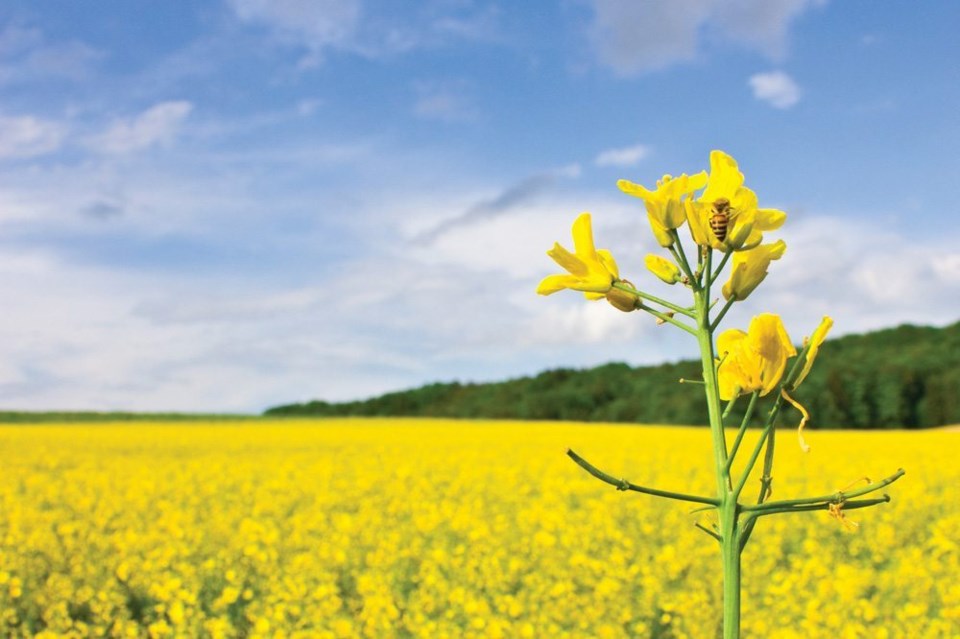Growers know that protecting their crop from weeds and diseases is crucial to achieving high yields and producing quality grain.
Canola growers should be mindful of managing blackleg. Research shows that for every increase in blackleg severity of infected plants, growers will realize a 17% yield loss. The disease can become a serious problem for Canadian growers, as it can overwinter on infected canola residue and affect newly planted canola for up to five years.
A growing problem
“Blackleg is not going away,” says Colleen Redlick, a Technical Service Specialist with BASF Canada. “Average prevalence across the prairies decreased only slightly from 78 percent in 2016 to 76 percent in 2017. These high prevalence numbers indicate that growers should be mindful of the disease, and need to be prepared to protect their crops.”
With blackleg being a consistent problem in the prairies, the Canola Council of Canada recognizes the importance of managing the disease, and has placed a priority on its research with the Blackleg Strategic Plan.
The Plan was developed in partnership with grower groups, provincial extension staff, and public and private plant pathologists. In the Plan, the Canola Council states that the canola industry has primarily relied on resistance genetics alone as the main method for managing blackleg. However, the Canola Council adds, “this method may not provide durable control into the future.”
Effectively managing blackleg
Research from the Canola Council and other industry groups is finding that an integrated disease management strategy is key to effectively managing blackleg. Redlick notes that, particularly for the coming growing season, it is important to realize that many growers across the prairies are on two-year canola rotation. “Growers should consider the high levels of disease experienced in the 2016 canola crop when planning for 2018, as many canola acres will be planted on potentially diseased stubble from the 2016 season. Using a longer crop rotation to avoid planting on infected crop residue is a key strategy that growers can take to avoid building up disease inoculum,” she says.
“Using the BASF blackleg yield loss calculator can also help growers figure out their yield loss due to blackleg, based on how much blackleg and the severity of the blackleg that was found when they scouted their fields at swathing timing,” Redlick adds. “But getting out in the field and scouting is that important first step.”
The blackleg calculator was developed to help growers manage the growing blackleg problem, and is based off work by Dr. Stephen Strelkov’s lab at the University of Alberta. Growers interested in seeing how the calculator can provide more information on blackleg and yield loss can visit agsolutions.ca/blackleg_calculator.
Fungicides provide added protection
Ralph Lange, a Plant Pathologist with Alberta Innovates, and one of the contributors to the Blackleg Strategic Plan, advises, “Fungicides are not a substitute for genetics and rotation. They can play an important role in managing blackleg and provide a ‘safety net’ and an added level of protection, but should be used in conjunction with genetics and rotation.”
Lange says this can be particularly important in situations where growers are renting land, where they may not have a complete picture of their blackleg disease pressure, or which resistant varieties have been in the field. However, he says he would advise against growers using a susceptible variety or one that has been marked as moderately resistant, and then think that they’re going to get all their protection from fungicides. “Fungicides need to be incorporated as part of an integrated approach in order to provide effective blackleg management.”
Canola with a Level 1 blackleg severity rating; diseased tissue occupies 25 percent or less of cross-section. An integrated disease management approach can protect against blackleg.
Canola with a Level 5 blackleg severity rating; diseased tissue occupies 100 percent of cross-section, and the tissue inside the stalk is dry and black. An integrated disease management approach can protect against blackleg.




